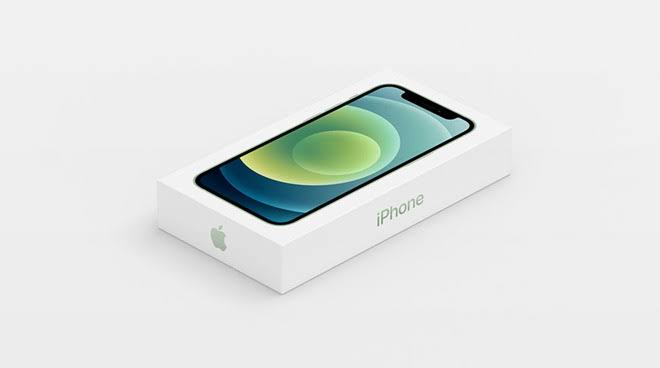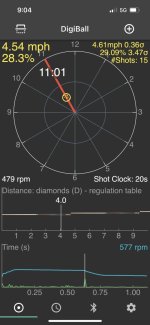Well yes, I made an inductive charger. But I need to power the inductive charger, and the most cost effective and probably expected way is USB C power cord.Since it’s a CB, can you eliminate the corded charger entirely and use inductive charging instead?
You are using an out of date browser. It may not display this or other websites correctly.
You should upgrade or use an alternative browser.
You should upgrade or use an alternative browser.
Electronic pool product question regarding USB Chargers
- Thread starter nataddrho
- Start date
Not feasible because of the need for two packaging configurations.Best option: Sell a charger as an optional add-on (probably not feasible)
Second best option: Sell without a charger, clearly say it has no charger, and make it clear exactly what type of charger works
Charging lithium ion batteries is chemistry dependent. Too fast and the cell will swell and get damaged as well as reduce the lifetime. Most common is 0.2 to 0.25C where C is the capacity in current-hours, so that is why most batteries take 4 hours to charge fully.Include a charger, but one like a Warp charger that will charge from 0-100% in less than one hour.
This is an option but the axial power connector is the same cost as a usb C connector. Plus usb C allows charging from devices like your phone or a battery pack as well as from the wall. More options.Can you just put an adapter for direct power supply? USB interfaces are costly.
Ah, great. I thought you might have been trying to put a port and/or door on the ball itself...Well yes, I made an inductive charger. But I need to power the inductive charger, and the most cost effective and probably expected way is USB C power cord.
My vote is no charger. You don't even have to mention it as a "disadvantage". Just say on the packaging "works with any standard USBc phone charger".
I'm an Apple fanboy. For decades, Apple has removed and simplified things, and everyone goes nuts, especially competitors. They make "fun" of apple in commercials. Then 2 years later, they follow suit. It's all just bs for marketing attention off the back of Apple's popularity.
It would be neat if the ball could test cushions. I wanted to build something like that for a while, but not enough to sit down and actually do it With an accelerometer in the ball, I believe you would be able to test the coefficient of restitution of the cushion. Also test spin changes into and out of the cushion, angle changes, etc., all at various speeds. Get to the bottom of the differences in Diamond's blue tables
With an accelerometer in the ball, I believe you would be able to test the coefficient of restitution of the cushion. Also test spin changes into and out of the cushion, angle changes, etc., all at various speeds. Get to the bottom of the differences in Diamond's blue tables
Well yes, I made an inductive charger. But I need to power the inductive charger, and the most cost effective and probably expected way is USB C power cord.
If you are using the Qi standard for wireless charging and including a Qi-standard charging pad, then certainly I would not expect the AC/DC plug on top of that.
It would be neat if the ball could test cushions. I wanted to build something like that for a while, but not enough to sit down and actually do itWith an accelerometer in the ball, I believe you would be able to test the coefficient of restitution of the cushion. Also test spin changes into and out of the cushion, angle changes, etc., all at various speeds. Get to the bottom of the differences in Diamond's blue tables

I would think that same data could be used to detect table levelness/rolloff. I assume he is using a 6 DOF accelerometer that includes a gyro on the same IC. Perhaps he even will include a magnetometer to round out the IMU.
This is all possible with my hardware. With the processor resources I have allocated into a sensor sample rate that consumes very little power the current configuration is:It would be neat if the ball could test cushions. I wanted to build something like that for a while, but not enough to sit down and actually do itWith an accelerometer in the ball, I believe you would be able to test the coefficient of restitution of the cushion. Also test spin changes into and out of the cushion, angle changes, etc., all at various speeds. Get to the bottom of the differences in Diamond's blue tables

Cushion collision: yes
Cushion restitution: no
Spin changes: yes, very accurately
Angle changes: no
Speed: yes
Cloth rolling resistance: yes
Cloth drag friction: yes
Among other things, it is best at detecting where exactly the tip hit the ball, exact English precisely. It’s the touchless digital training ball that we have all always wanted, no more looking at chalk marks.
It has an over the air firmware update too, so different firmware versions can do different things.
No Qi, proprietary at this moment due to design constraintsIf you are using the Qi standard for wireless charging and including a Qi-standard charging pad, then certainly I would not expect the AC/DC plug on top of that.
I experimented with mags in the past inside buildings and got poor results. Calibration is a nightmare and they consume too much current for the accuracy you get out of them. Flux lines get warped by too many objects.I would think that same data could be used to detect table levelness/rolloff. I assume he is using a 6 DOF accelerometer that includes a gyro on the same IC. Perhaps he even will include a magnetometer to round out the IMU.
They work better in acoustic transponders in the ocean away from metal and structures.
The back of most desktops already has a usb port for charging. I also have two usb blocks that plug into the wall outlet that charge the devices. I do not even think you need a cable unless you have some off the wall connection.I'm in the development stage of a new electronic pool product, and since you are all my target customers, this article raises a good question...

$1,000 for selling iPhone without charger: Just the beginning of the nightmare for Apple? - Dazeinfo
Apple is fined for selling iPhone without charger in Brazil. The court has ordered Apple to pay $1,081 to a customer who sued the companydazeinfo.com
Part of my product requires a standard 5V USB charger. But should I include an off-the-shelf USB charger and a cable with the product, or follow the trend of providing just the cable and asking the consumer to find their own charger.
Since the pool community spans a few generations what are your opinions on this?
On draw shots I hope it will tell us where the cueball was hit causing it to jump in the air. Measure the amount of deflection? Rotation amount?Cost hopefully won’t be too much. Retail must be many times the COG due to logistics and distribution outside of my control so shooting for same price as the DigiCue.
Yes it will include a scatter plot around a marked aim point. Saving your stats to a database with a login for future comparison will be possible after I finish the minimum viable product. For now I need to keep features simple until I finish all manufacturing tasks.
Currently the app works for Android and iPhone, but since I used Flutter as a code base I can extend it to iMac, Windows and Linux with the use of a separate BLE receiver dongle just like I did for DigiCue. Native BLE on computer systems still isn’t mature in 2023 which is surprising.
Rotation amount, yes.On draw shots I hope it will tell us where the cueball was hit causing it to jump in the air. Measure the amount of deflection? Rotation amount?
Deflection amount, no.
Where the cue ball was hit, yes ONLY if there was not a miscue. A miscue invalidates the calculations.
Actually yes. If you use the ball as an object ball you can measure the collision induced spin. If you deliberately add a chalk mark to create skid you can see the extra spin created. Good question I didn’t think about this usage until now.Will it show skid?
Jump shots: yes, especially micro jumps during break shotsWhat about jump shots. What will it tell us? Downward force? How high the hop?
